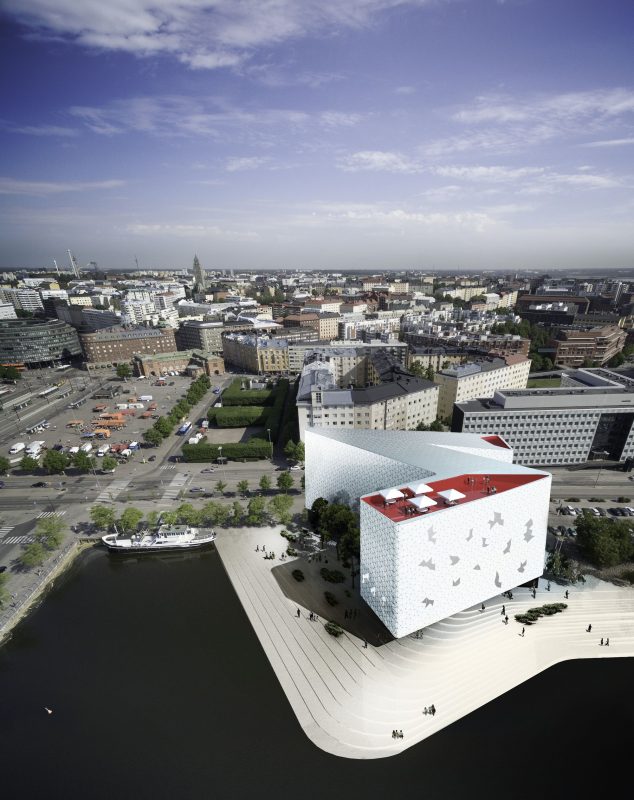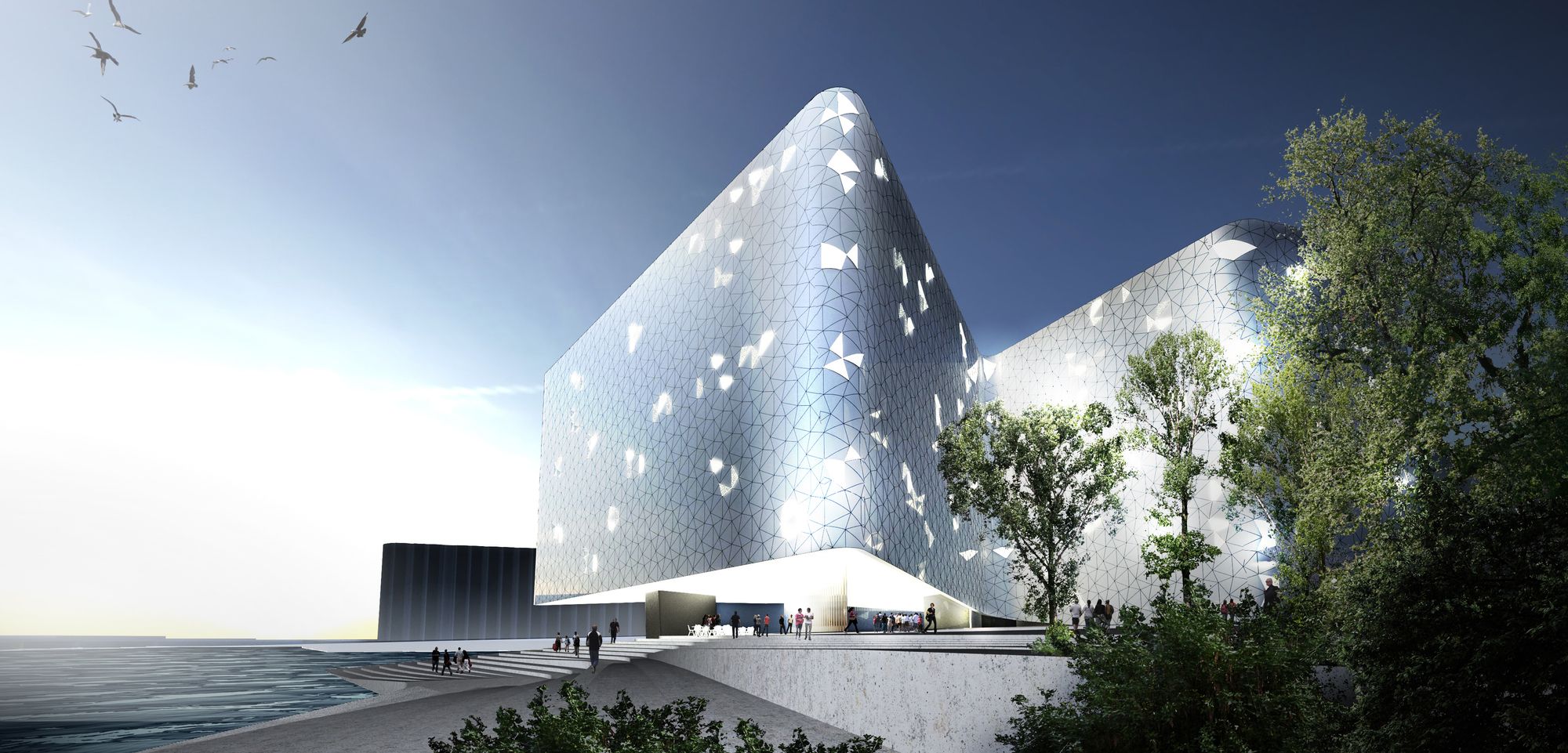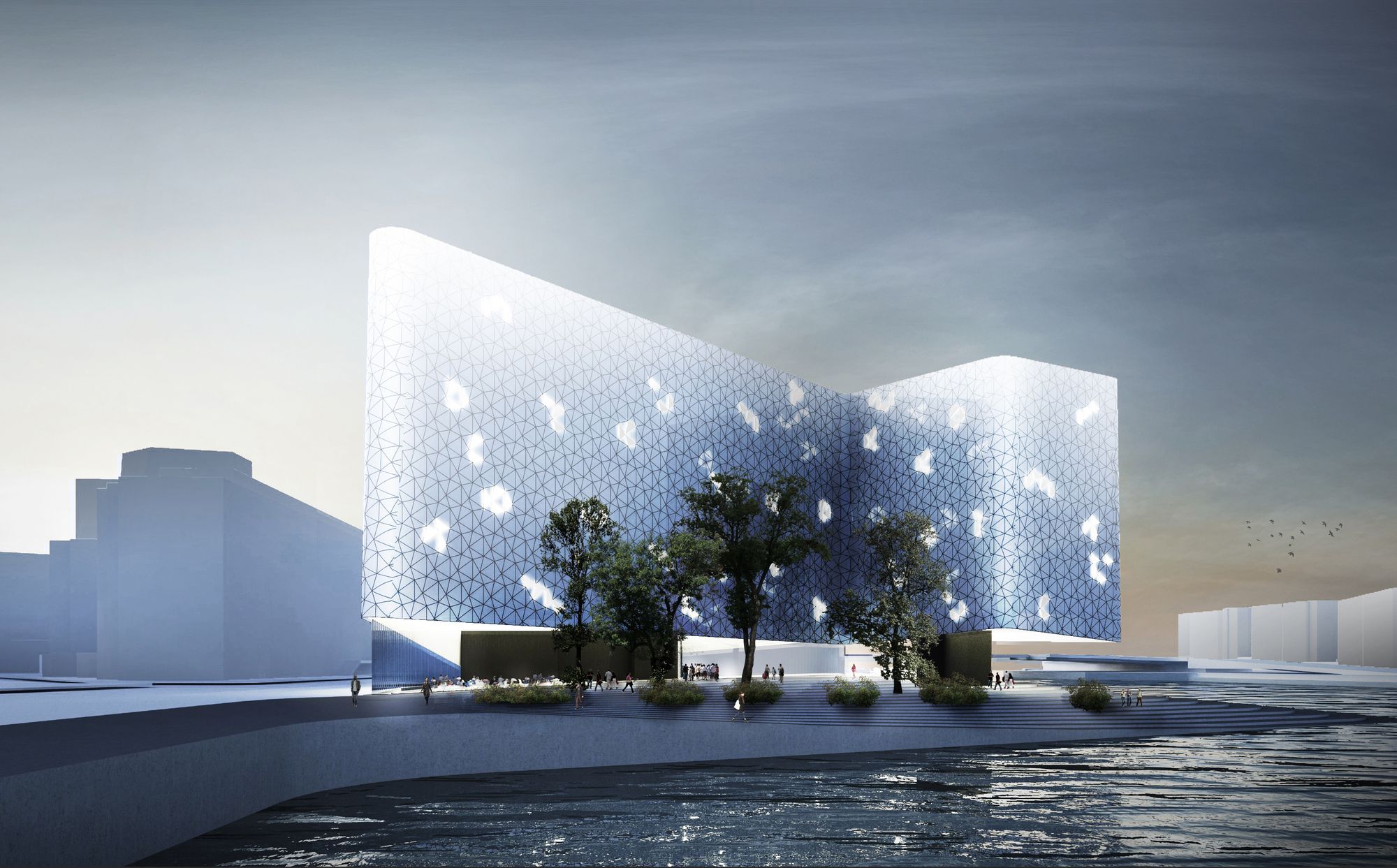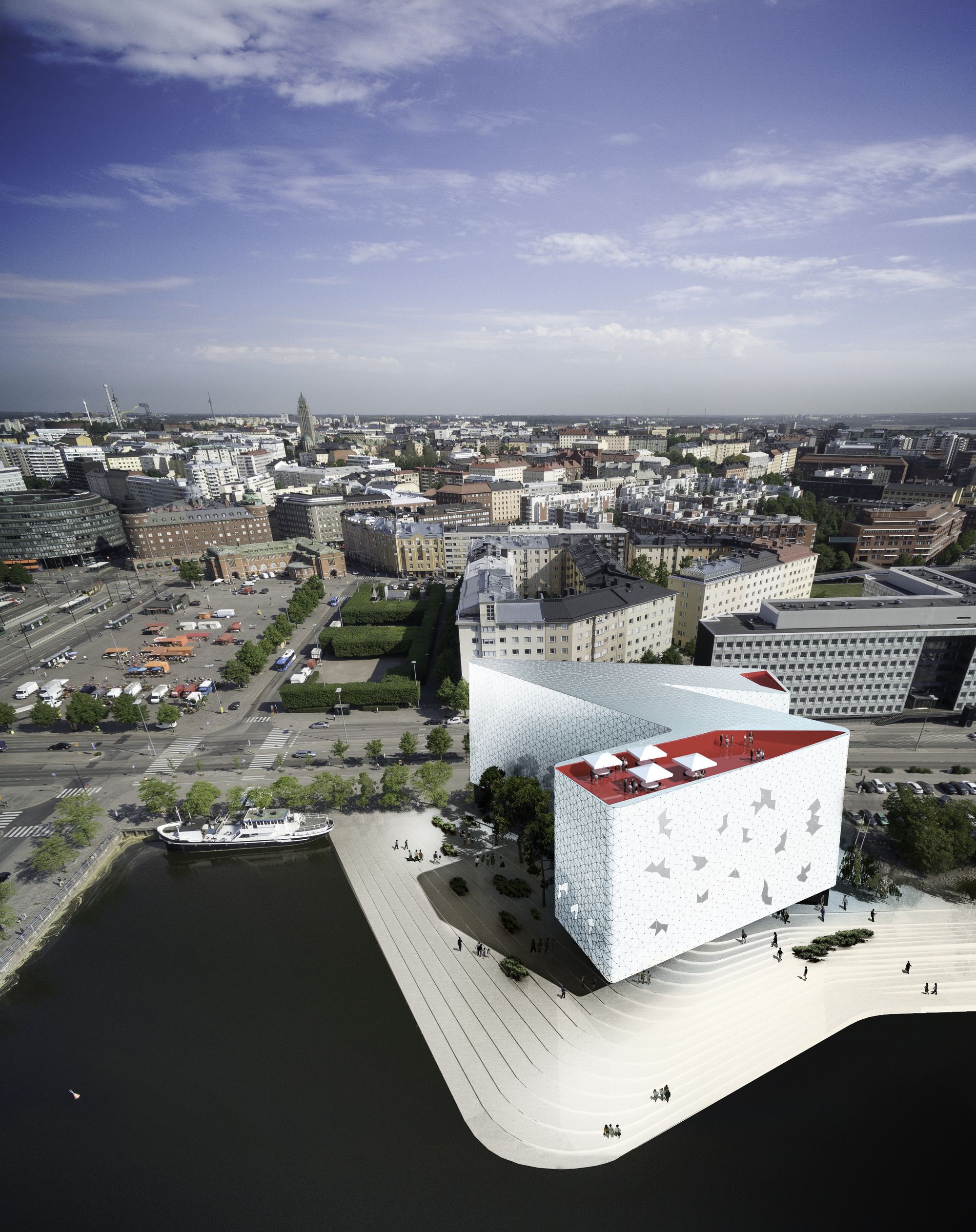Oslo-based design office Snøhetta wins an invited competition, organized by AB invest A/S, the City of Helsinki, and the Finnish Association of Architect, to design a new hotel on the Hakaniemi waterfront in Helsinki, Finland. According to Snøhetta, their winning entry, Hilbert’ Hotel, will be “a new beacon of Helsinki.” The project does not only target the hotel guests and employees but also targets the public. “We have tried to actively celebrate the presence of visitors in the city. Simultaneously, we have tried to promote the qualities, such as the connection to the water, of this specific site as a gift to the visitors and inhabitants of Helsinki,” says Snøhetta Founding Partner Kjetil T. Thorsen. In order to achieve this mix, the designers apply a concept that is “both generic and contextual at the same time,” generating a design that points to the future while referring to the city’s history and values. The “contextual” approach, also, makes the building harmonious with the urban fabric of its surroundings and with the community at large. The proposed design shows the project’s private domain, represented in the hotel rooms, raised on a foundation, separated from the waterfront by a stepped plaza. The foundation, along with the plaza, constitute the public domain of the project and the link between the city and its waterfront. “Maintaining a high degree of permeability of the plaza is an essential element for the design, ensuring access to the water and connectivity across the site and with the wider neighborhood,” says the designers. The hotel’s public zone will include restaurants, bars, outdoor seating, and roof terraces, bringing more visitors to the site and livening Helsinki’s waterfront. While the public part of the project strives to maintain a connection with its surroundings, the private part, which is “enveloped in a smooth contiguous white glass skin,” is made to stand out by contradicting the rough-looking masonry façades of the Hakaniemi district. The glass panels, forming the skin, are made to resemble “broken sea ice” by the use of small joints. They are distributed in a modular pattern based on the locations of the hotel rooms so that each room has a number of usable windows within this pattern. The resulting monochromatic, seemingly continuous, façade shows its transparent nature best at night when the occupied rooms are lit from the inside.
courtesy by © Snøhetta
courtesy by © Snøhetta
courtesy by © Snøhetta





